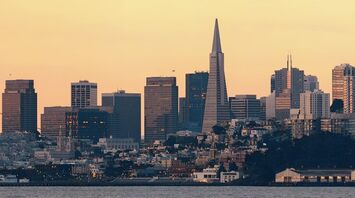The number of San Francisco residents will grow by 2100: a study by the University of Chicago

A new study predicts fairly positive population growth on the West Coast over the next century, and cities like San Francisco that are less dependent on cars and already have high population densities are likely to fare better as climate change factors give people more reasons to move.
After several years of hopeless stories about San Francisco's failed recovery from the pandemic, you may be encouraged to hear that some forecasters see a bright future for the city. Researchers from the University of Chicago believe that San Francisco may benefit from climate change, while cities in the Northeast and Midwest will lose some residents, Sfist writes.
What awaits cities in thenext 76 years
The study on long-term urban planning, published this month in the journal Nature Cities, is by researchers from the University of Chicago's Department of Civil, Materials and Environmental Engineering. It examines a wide range of factors that will affect population movements over the next 76 years (to 2100), the largest of which will be the impact of climate change.
Cities that are more resilient to climate change, such as San Francisco, with more educated and densely populated populations, are likely to benefit in the next century. Other cities, meanwhile, may experience population decline as their populations shift, the researchers say.
Such "population loss in already developed cities could lead to underutilization of poorly maintained infrastructure, possibly leading to disruptions in basic services such as transportation, clean water, electricity, and internet access," the researchers write. - "Estimating future demographic trends can help authorities better plan and design cities and their infrastructure systems for depopulation.
Two climate change scenarios and their impact on cities
The study looks at two climate change scenarios, a moderate and a more severe one, which the researchers euphemistically call "shared socioeconomic pathways."
The study shows that by 2100, most states will experience population decline, and this decline will hit rural areas hardest. Internal migration to cities will continue as it has in recent decades, and this will particularly benefit California's large cities, as well as Portland and Seattle, and much of the American South. Meanwhile, in cities like Chicago, New York, and Boston, populations will either remain flat or decline, the researchers say.
A more extreme climate scenario puts San Francisco in a more favorable position in terms of population than parts of the southern California coast. In general, the study shows that "about half of the 30,000 US cities are likely to lose population by 2100".



















